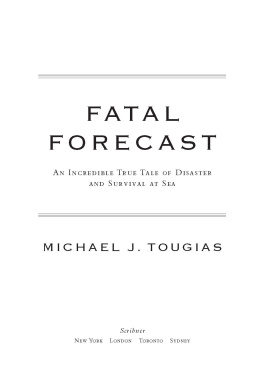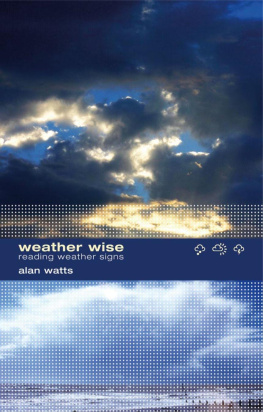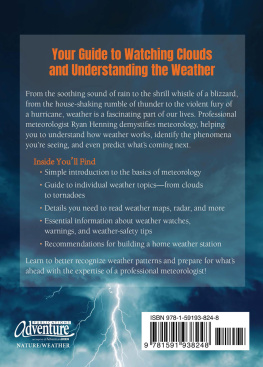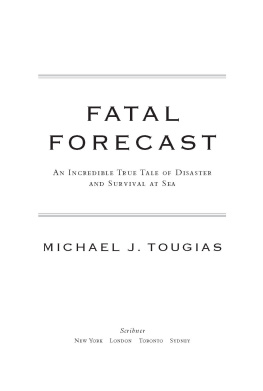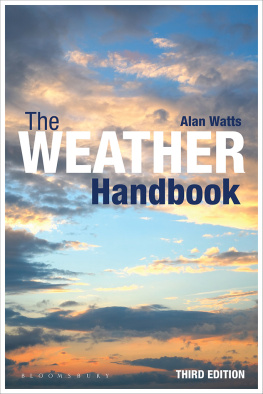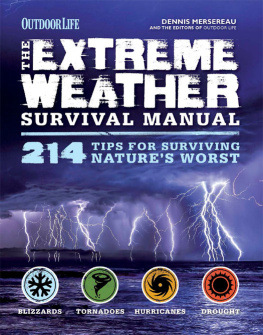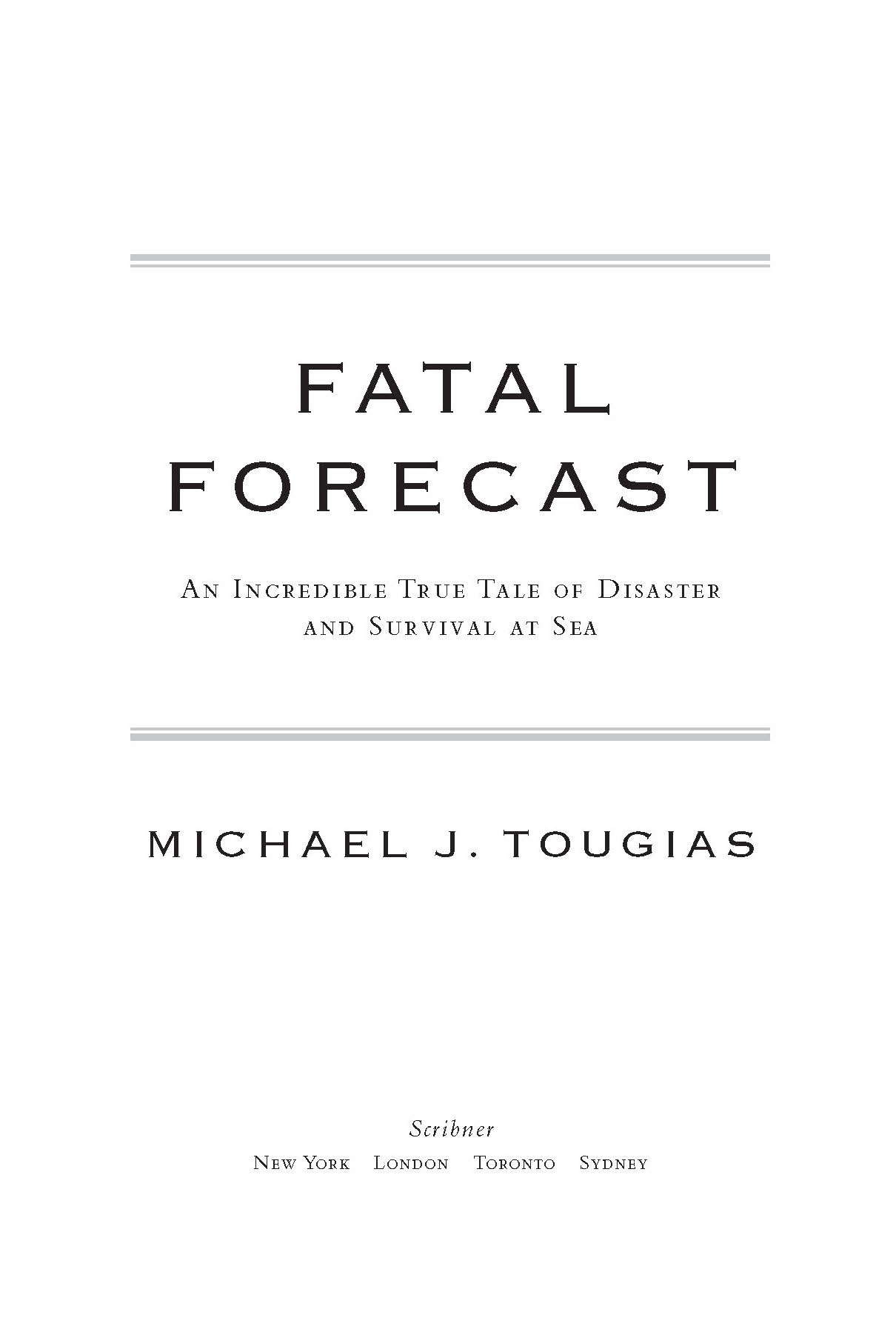ALSO BY MICHAEL J. TOUGIAS
Ten Hours until Dawn:
The True Story of Heroism and Tragedy Aboard the Can Do
Until I Have No Country:
A Novel of King Philips Indian War
River Days:
Exploring the Connecticut River from Source to Sea
King Philips War
(coauthor Eric Schultz)
Quabbin: A History and Explorers Guide
The Blizzard of 78
AMCs Best Day Hikes Near Boston
Nature Walks in Central and Western Massachusetts
(coauthor Rene Laubach)
Theres a Porcupine in My Outhouse:
Misadventures of a Mountain Man Wannabe

SCRIBNER
1230 Avenue of the Americas
New York, NY 10020
Copyright 2007 by Michael Tougias
All rights reserved, including the right of
reproduction in whole or in part in any form.
SCRIBNER and design are trademarks of
Macmillan Library Reference USA, Inc., used under license
by Simon & Schuster, the publisher of this work.
Library of Congress Cataloging-in-Publication Data is available.
ISBN-13: 978-1-4165-4644-3
ISBN-10: 1-4165-4644-8
T O THE CREWS OF THE
F AIR W IND , S EA F EVER, AND B ROADBILL
Dave Berry
Brad Bowen
Gary Brown
Peter Brown
Billy Garnos
Ernie Hazard
Grant Moore
Richard Rowell
Rob Thayer
PROLOGUE
G EORGES B ANK, LOCATED ONE HUNDRED MILES EAST of Cape Cod, Massachusetts, is one of the richest fishing grounds in the world. It is an oval-shaped plateau on the oceans floor, roughly the size of Massachusetts, Rhode Island, and Connecticut combined. Sixteen thousand years ago, during the ice age, Georges Bank was land, not sea, a broad coastal plain connected to the rest of North America. Nearby Nantucket and Marthas Vineyard were the largest hills in the region. As the glaciers melted and retreated, water filled in the deeper channels around Georges Bank, making it an island. Trapped on this enormous island of pine, juniper, and oak were land animals such as woolly mammoths, mastodons, moose, and caribou, whose teeth are today sometimes brought up in fishing nets. As the sea rose, more of the island flooded, and roughly six thousand years ago all of it was submerged.
Water depths on Georges Bank are irregular; in some places canyons plunge thousands of feet deep, while in other sections shoals of sand rise to within ten feet of the oceans surface. Such shallow waters have led to exaggerated tales of fishermen claiming to have played baseball in ankle-deep water during low tide. The shoals are the very reason fishermen venture onto the Bank. Rays of sunlight can reach the bottom, allowing plankton to grow. Small fish gather to feed on the plankton and larger fish in turn prey on them.
The Banks tremendous currents also contribute to the fishery by creating a high-energy environment of cycling nutrients and oxygen, but these currents, a swirling combination of tidal and surface waves, produce a constant turbulence when they collide over the sandy shoals. Many of the first fishermen to visit the Bank never went back, fearing the currents were too strong for them to safely anchor their boats. One early fisherman recounted a grim story of what happens when an anchor cable snaps. He was on board an anchored vessel in a storm when another boat, whose anchor had broken loose, careened past his boat. The drifting vessel was coming directly at us. With the swiftness of a gull she passed by, so near that I could have leapt aboard. The hopeless, terror-stricken faces of the crew we saw but a moment. The doomed ship then struck another vessel and both went down. The Georges Bank fisherman closed his observation by writing, We knew that many a poor fellow who had left Gloucester full of hope, would never more return.
Georges Bank is also dangerous because of its location in the Atlantic. On the eastern end of the Bank the warm waters of the Gulf Stream collide with the cold Labrador Current, creating swirling waves. Although the currents at Georges Bank are almost always rough, when strong winds are added, chaotic seas occur, particularly in the shoal waters where vicious waves suddenly crest and break. Fishermen who venture out to Georges Bank need a boat large and sturdy enough to handle these seas. Here, help, should you need it, is hours away, an eternity if your vessel is going down. Captains fishing Georges Bank understand this, and the smart ones keep their boats in tip-top shape and always have one ear glued to the radio, listening to each and every updated weather report. If a big storm is coming, they get out of its wayfast.
The floor of the Bank is littered with rotted, rusting wrecks, and todays draggers must dodge them or risk snagging their nets. Some wrecks have been identified, but most are unknown. Year upon year, boats have a way of disappearing on Georges Bank. Even with radios, many vessels that sink give no indication of their coming doom. Something sudden and catastrophic happens, and the boat sinks within seconds, joining the hundreds of others on the bottom.
The deadly nature of Georges Bank is the trade-off fishermen must reckon with to get at catches richer than those found closer to shore. To fish the Bank one must accept the risk. This is not an environment for the fainthearted. The men who work the Bank are a rugged lot, who quickly develop a certain toughness that keeps fear in check. One of these men was thirty-three-year-old Ernie Hazard. What he endured on Georges Bank is nothing short of remarkable.
PART I
CHAPTER 1
The Fair Wind Crew
E RNIE H AZARD WAS IN HIS THIRD YEAR OF OFFSHORE lobster fishing, and although the work was brutally demanding, he felt fortunate. The Fair Wind, a 50-foot steel lobster boat on which Ernie worked, was a meticulously maintained vessel equipped with the most modern gear and electronics. Equally important, Ernie enjoyed the company of his fellow crewmembers and his captainno one slacked off and everyone contributed to making the Fair Wind a very profitable boat.
On November 20, 1980, the crew was having dinner at the Backside Saloon in Hyannis, Massachusetts, enjoying a good meal before making the last trip of the season. The men had made close to thirty fishing trips to Georges Bank since the previous April, and they were all looking forward to having the next four months off. Ernie talked about going down to Florida to see his brother or possibly heading out to Carmel, California, to visit friends. Thirty-year-old captain Billy Garnos planned to focus on his new house and his fiance. Rob Thayer, age twenty-two, hadnt made any definite plans, but he hoped to travel, having spent prior off-seasons in such far-flung places as Labrador and Newfoundland. Dave Berry, the youngest crewmember at just twenty years old, lived up in Marblehead, Massachusetts, and hed likely take a little time off to be with friends before working at his fathers wholesale fish business.
Ernie felt relaxed that night, quietly listening as the rest of the crew discussed their plans. Every now and then he made a joke or a wry comment. The others had come to enjoy his self-deprecating humor and quick, dry wit. They also appreciated the muscle and stamina packed into his burly six-foot frame. He had arms as big as most mens thighs, and he put those arms to good use hauling and setting lobster traps. He looked tough and perhaps a bit menacing with his muscular arms, piercing black eyes, and wild black beard, but his crewmates knew that behind the gruff exterior was an intelligent and thoughtful man.

